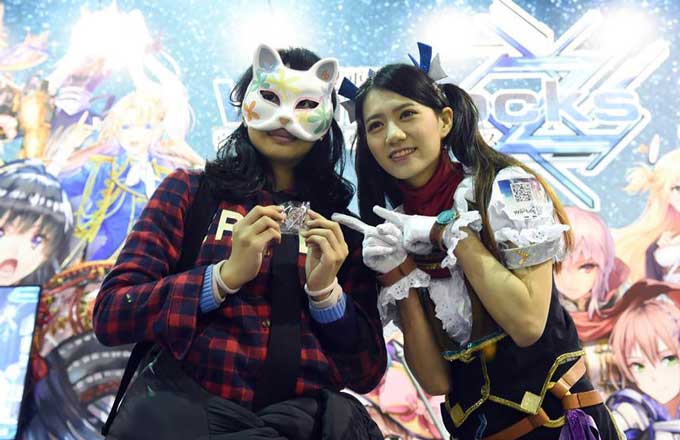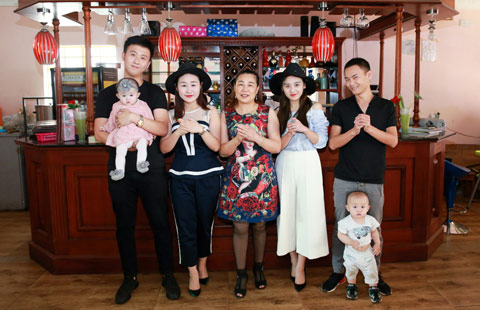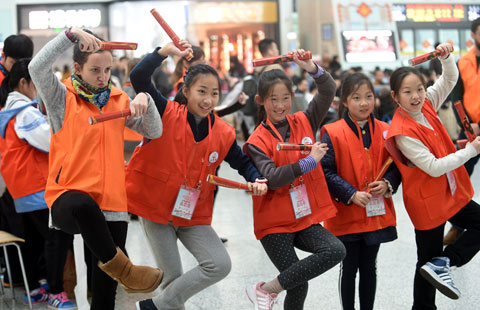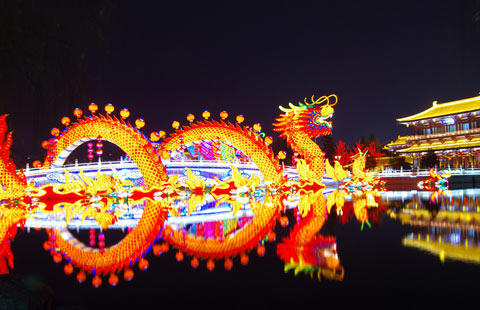As Chinese guzzle liquid cake, sales soar to a record
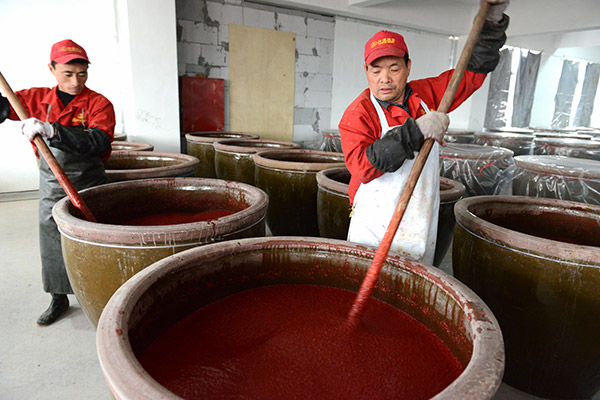 |
|
Brewers prepare yellow rice wine at a winery of Yiwu Danxi Wine Industry Co Ltd in Yiwu, Zhejiang province, on March 4, 2015. [Photo provided to China Daily] |
Forget beer and wine made from grapes. In China's alcoholic drinks market, it's all about another, equally old boozy beverage.
Yellow rice wine, sometimes known as liquid cake, dates back to the Shang Dynasty (c.16th century-11th century BC) more than 3,000 years ago.
It is the fastest growing mass-market alcoholic drink in China, with sales volume estimated at 8 percent of the total market last year, according to China International Capital Corp Ltd.
The brokerage, known as the Goldman Sachs of China, likes Anhui Kouzi Distillery Co Ltd and Jiangsu Yanghe Brewery Joint-Stock Co Ltd in the broader beverages sector, and highlights the three listed yellow rice wine producers: Zhejiang Guyuelongshan Shaoxing Wine Co Ltd, Kuaijishan Shaoxing Wine Co Ltd and Shanghai Jinfeng Wine Co Ltd.
With beer sales dropping and regular wine and liquor sales growth in 2016 slowing, yellow rice wine is seeing an uptick. It's less alcoholic than the more famous baijiu liquor. It's also seen as nutritious, hence the name liquid cake, as it contains eight types of essential amino acids, CICC analysts note.
Chinese consumers can easily identify the market position of yellow rice wines based on age, production region and taste, while imported grape wines are niche products and lack a clear hierarchical brand system in China, according to CICC analysts.
This leaves yellow rice wine better positioned to capture upgrades in consumption, they say, citing the shift in taste from Anhui's 5-year-old Kouzijiao, which retails for about 80 yuan ($12), to its 6-year-old version that is more than 40 percent more expensive.
There's also an expansion at shops selling a greater variety of yellow rice wine, according to CICC analyst Xing Tingzhi and colleagues who penned a 28-page report on what they've dubbed as the arrival of the drink's golden era.
More shop owners are applying for licenses to sell it, and the drink is also enjoying more popularity through internet sales.
The drink, which typically contains less than 20 percent alcohol, is made from water, cereal grains such as rice, sorghum, millet, or wheat and a starter culture.
Shanghai and neighboring Zhejiang province are the heartlands of yellow rice consumption, although growth is picking up elsewhere, according to CICC.
Sales of beer have been hit by more affluent and increasingly sophisticated consumers, analysts add, while wine is slowing after a huge expansion in the early part of this century.
As growth in yellow rice wine consumption increases, there is still room for wine made from grapes in China, they add.
Morgan Stanley analysts said investors were underestimating growth for Treasury Wine Estates Ltd, as a move away from beer and grain liquor boosted earnings at the Australian firm, which has raised prices at its Penfolds Bin range.
Bloomberg






